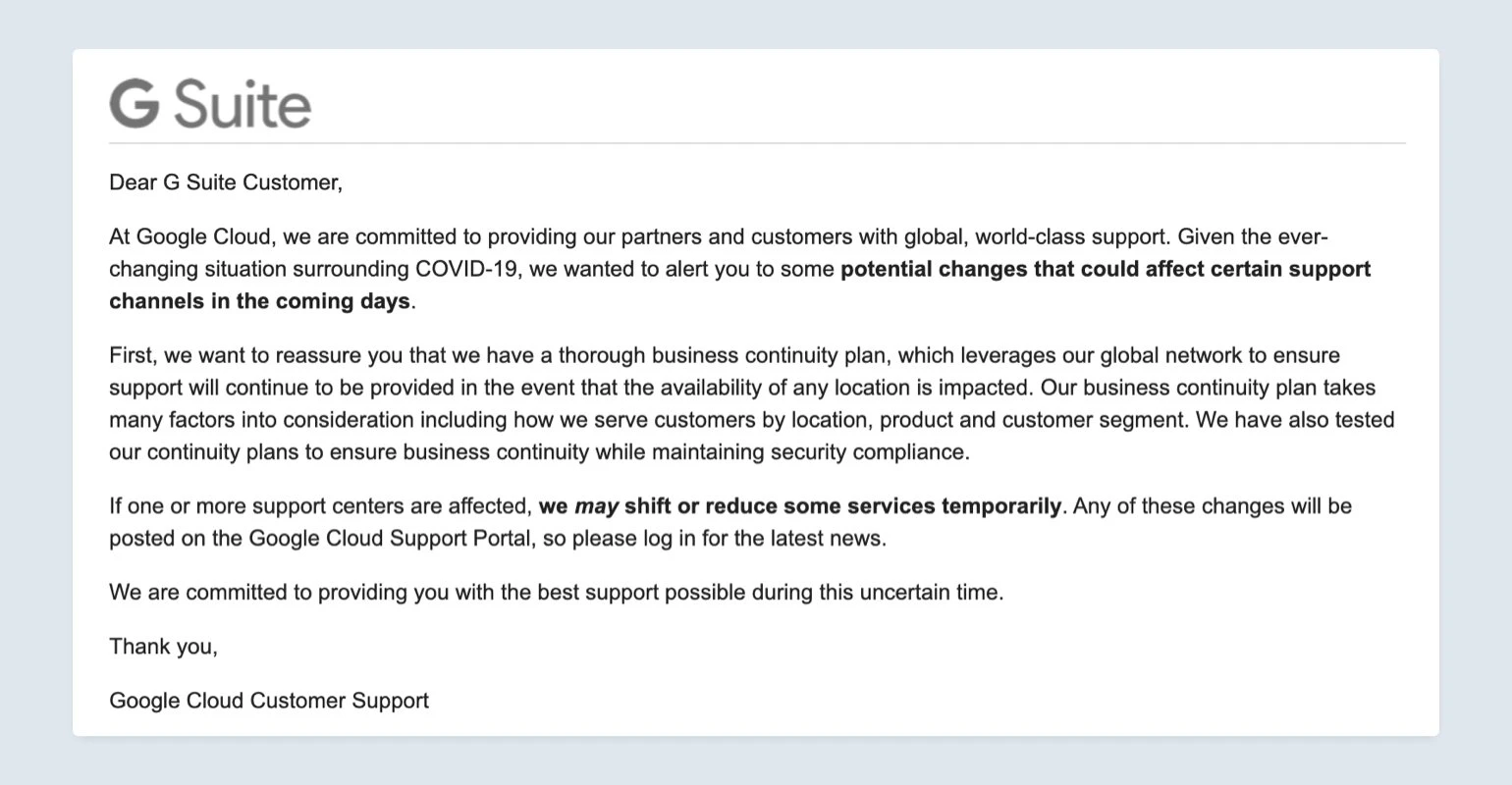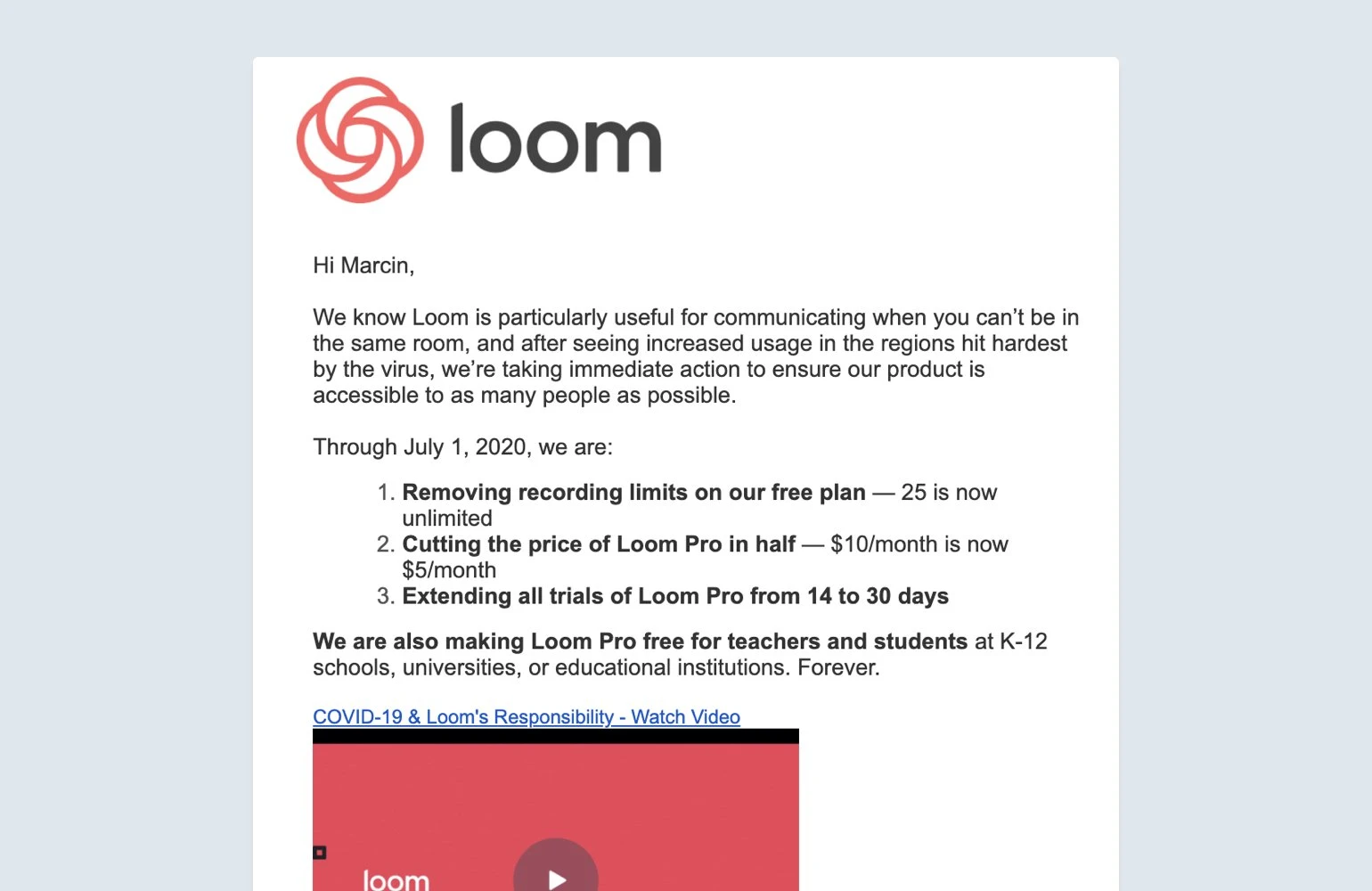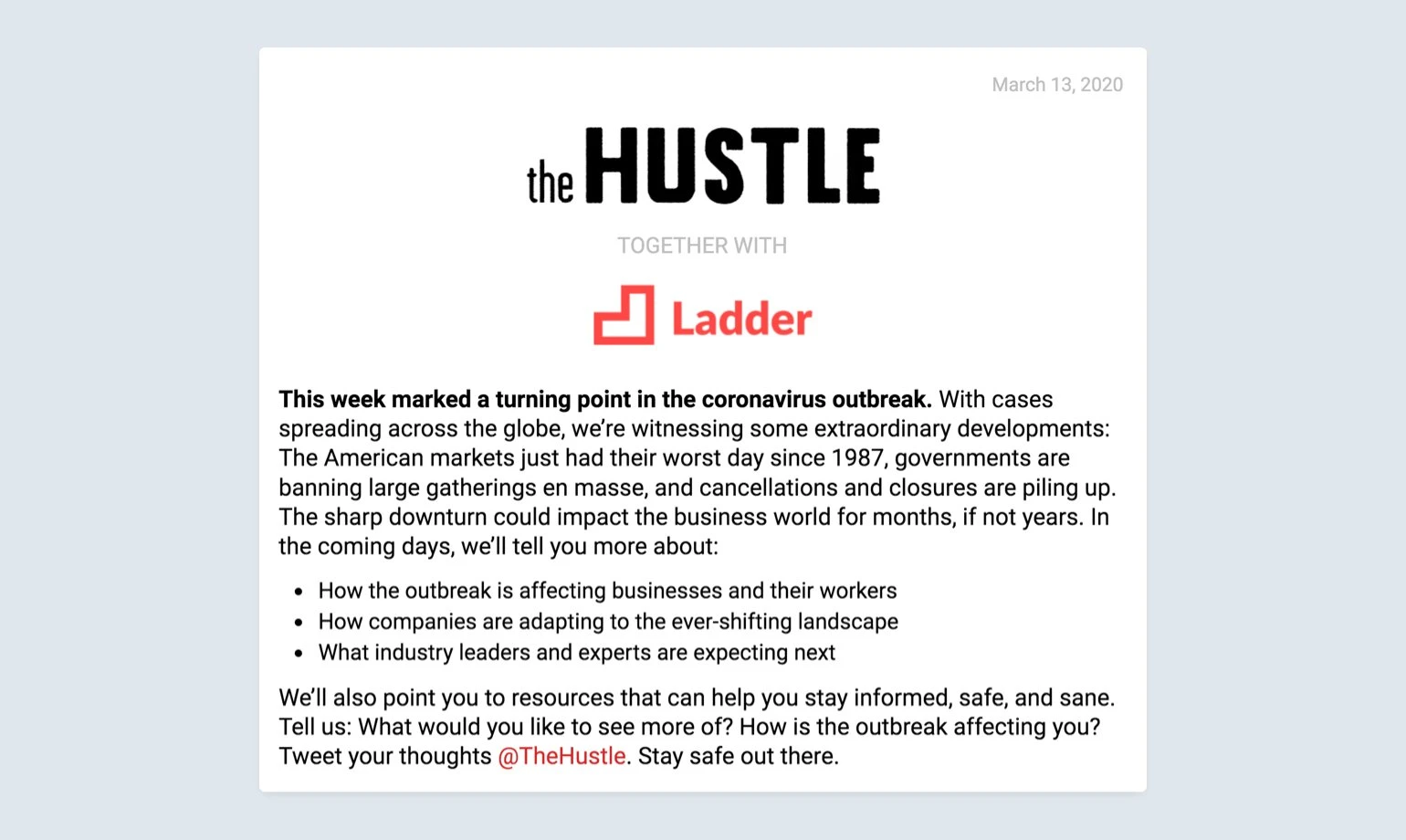How to adjust your email marketing during challenging times

The world has changed overnight. As we all adjust to our new reality, our priorities, behaviors and buying habits will also change.
For many of us, this means our businesses must adapt to find new ways to help our customers and address these new priorities. Our email marketing practices should evolve as well, especially under the current circumstances where people’s inboxes are flooded with emails from every direction.
At the same time, it’s critical for the life of your business that you maintain some level of communication with your subscribers and keep your relationships intact.
How do you use email marketing effectively during these uncertain times?
We’ve put together some email marketing guidelines to help you navigate the current landscape so you can keep up with your subscribers without adding to the noise. Here are 9 ways you can rethink and improve your email marketing, starting today.
1. Walk in your customers’ shoes
You and your customers have a lot in common right now. All of us are experiencing the same global event with similar consequences such as quarantines, limited travel and social distancing.
Although this shared experience is challenging, the silver lining is that you now understand your subscribers and their situation better than before because you are living it as well. Let this common bond create a sense of empathy in your email marketing practices. Ask yourself if you would want to receive “X” amount of emails or “X” amount of promotional messaging every week.
Find a new balance that works for you. Your messaging and sending frequency may need to change based on what your subscribers are experiencing.
2. Act fast if your subscribers need you
For industries directly affected, such as travel, health, education, etc., you should send out an email sooner rather than later addressing exactly how you are dealing with the situation and how it affects your subscribers.
You don’t want to go silent if people need to hear from you. Reassure them that you have a sound plan in place and put your subscribers’ needs before your organizations’ needs. For example, airlines are waiving change fees, hotels are allowing cancelation and conferences around the world are honoring tickets for next year’s event.
In this email below, Gmail reassures its customers that they have a continuity plan in place to keep people’s email service active.

3. Be hyper-relevant and reduce the noise
Your subscribers are inundated with COVID-19 emails. Some of these emails are super important and even urgent, like messages from governmental and health organizations. Unfortunately, many other emails are unnecessary and only add to the inbox clutter.
Does this mean you should stop emailing? Absolutely not! But during this sensitive time, make sure your emails are hyper-relevant to your subscriber’s current situation.
How is your message adding value to your subscribers’ new routines and behaviors?
1. Create new types of content that help people. For example, a food company can send recipes that boost your immune system. At MailerLite, we happen to be a remote-first company, so we decided to help people who are new to working from home.
2. Give away your product (or provide a discount) if it is something that can directly impact people’s lives. Publishing companies can offer discounted book downloads to help people pass the time. Video conferencing company Zoom gave free access to all schools K-12, so they can continue online education. Can your product or service help enhance people’s current experience?
3. Start a community group around a topic related to your business that connects like-minded subscribers. This helps build morale and loyalty. Our FB group is now sharing creative ways to tackle new business challenges. If you're not already part of our community, you can join here!
Whatever you decide to talk about in your emails, show you genuinely care. Don’t go for the quick sale. Send empathetic messages that are backed up by actions. Take this example from the video-creating tool, Loom:

4. Use an appropriate tone and messaging
It’s very difficult to know exactly how each person will react to your emails. People are more sensitive, and some might even be extremely upset during this time. To play it safe, it’s best to use a tone of voice that everyone will recognize as compassionate and respectful.
If your brand usually uses humor or a more playful tone, try to pull back a bit during the next few months. To avoid confusion, keep your messaging as clear as possible so no one will misinterpret your intentions. Be as genuine and honest as possible.
While you might be showing a different side of your brand’s personality, don’t forget to still be yourself and to deliver the same value that your subscribers expect. Here’s an example from wise-cracking The Hustle. They turn down their usual humor, yet still, provide the same level of value with a human tone of voice.

5. Avoid sharing your opinions
While we’re on the topic of messaging, steer clear of adding your personal commentary or opinions in your emails. When people feel frustrated about a particular situation, they all have varying beliefs about what’s best. Your opinion might be good-intentioned, but you will risk alienating a group of your subscribers.
You only have to spend a few minutes on social media to see that people have all kinds of opinions that differ from yours. Avoid hurting your company’s reputation, which would have a long-term impact. Stick to your value proposition and focus on how you’re helping your subscribers.
6. Rethink your segmentation and groups
This is a good time to review your current subscriber segments and groups to determine if there are new ways to target your audience based on the current events.
Perhaps there are new geographical considerations. Maybe your subscriber targeting is now less about demographics and more about their behavior. For example, some regions are currently in quarantine, while others are still going out. People with kids are homeschooling while single people are finding new ways to stay connected as they practice social distancing.
Depending on your business, these types of targeting changes can help you send different messages to each group to show you understand them.
7. Retool your automated emails, forms and landing pages
For those of you who use email automation, check your emails currently in the workflows to make sure they are still appropriate. Some of those email triggers, like your welcome email, might have been written months ago during a different time.
You might also have pop-ups or landing pages with offers that are no longer valid. Many times these promotional messages are designed to heighten urgency like “Time is ticking’ or “Don’t waste another minute”. You can see in context how these types of messaging can seem insensitive.
Go through your emails, pop-ups, forms and landing pages to fix the tone and messaging so they match the current environment.
8. Do more A/B testing
Have you used A/B testing to test your email campaigns in MailerLite? Also known as split testing, this feature can come in handy if you aren’t sure what new messaging will resonate with your subscribers.
You don’t have to rely on guessing! You have the option to test your subject lines, different sections of content or your sender name. Once you decide what to test, MailerLite sends both versions to a small group of your subscribers. The entire subscriber group will then receive whichever version performs the best.
You can test your different offers, images, colors or call-to-actions. And, it’s easy to set up. Here’s our video tutorial to get started.
9. Monitor your metrics and adjust
Are your campaigns performing differently? Your metrics can shed light on how your subscribers are feeling and give you ideas of the changes that you might need to make. For example, maybe you have fewer opens, but a much stronger click-through rate (CTR). If so, you might want to consider segmenting out those subscribers who are no longer engaging with that content.
Your metrics can help you make other decisions around sending frequency, content topics and special offers. Compare your performance with historical data, and make adjustments to boost your numbers.
1. Sender address is the same one that you always use (familiarity is important)
2. Subject line clearly describes the content and doesn’t cause alarm
3. Messaging is straightforward, empathetic and helps the reader in some way
4. Segment matches the content topic. Is your email relevant to the entire list?
5. Your business is ready to deliver on the offer you are promising in your email
Think long-term and stay positive
We are acutely aware that new sales are key to keeping every business healthy. You need to generate revenue, but try not to make your email marketing all about quick sales. Find a new balance. Remember, you are building long-term customer relationships with email and right now might be a better time to give more and expect less.
Finally, we recommend staying positive in all your marketing communications. During tough times, people need all the encouragement they can get. You are in a unique position to send out good vibes to your entire email list. Better days are coming!
